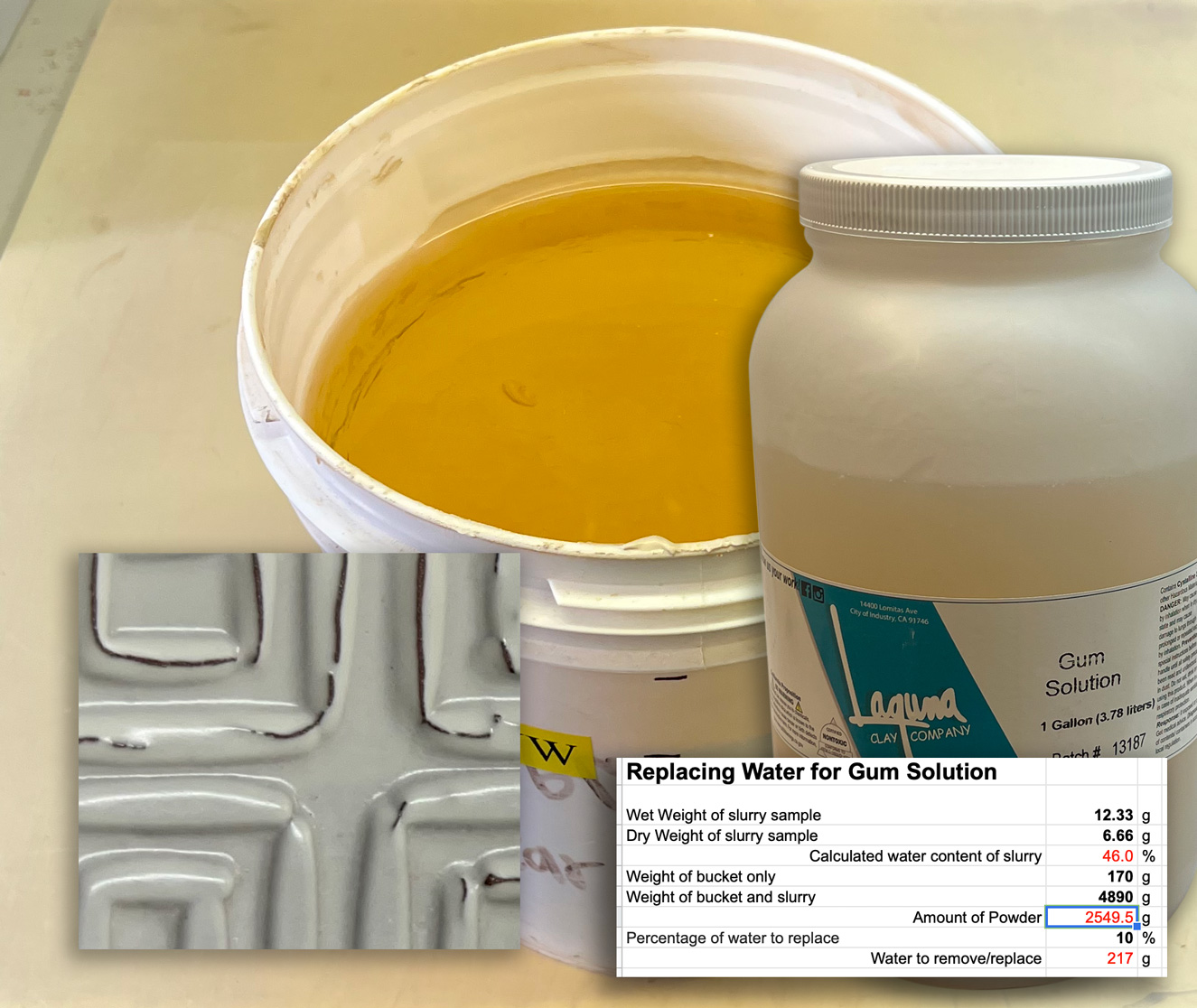| Monthly Tech-Tip | No tracking! No ads! |
URL: CMC Gum Calculator - Worksheet
Click the link below to go to this page
https://docs.google.com/spreadsheets/d/1XLPlIrW4tXnqAyowrE_P96OmbMfzEA-ggkYHcqBHtSU/edit?usp=sharing
Use this to calculate how much gum and water to use when mixing a new glaze or how to calculate and replace some of the water in an existing glaze slurry with gum solution.
Related Information
Fixing a crawling problem with a measured CMC addition

This picture has its own page with more detail, click here to see it.
The problem: This dipping glaze is crawling (as shown on the glazed tile). Let's assume I have already checked to make sure the specific gravity is right and the slurry is thixotropic. Because it has settled a little there is an opportunity for plan B: Remove some of the water and replace it with gum solution. Shown here is a precise calculation of the exact water content of the slurry to replace 10% of the water with gum solution. But it is better to take a more conservative and easier approach: Replace one-twentieth of the water with gum solution (too much gum and the glaze will drip excessively and dry too slowly). Rather than be overly precise let's just guess: I have 5000g of slurry that is about 50% water, so that is 2500g of powder, so I need to remove 125g of water and replace it with 125g of Laguna gum solution. A good way is to use a sponge: Wet and wring it out first and then repeat touching it to the water surface and wringing it out into a container to get 125g. A propeller mixer is needed to mix in the added gum solution (it won't just stir in).
Links
| Glossary |
Brushing Glaze
Hobbyists and increasing numbers of potters use commercial paint-on glazes. It's convenient, there are lots of visual effects. There are also issues compared to dipping glazes. You can also make your own. |
Got a Question?
Buy me a coffee and we can talk

https://digitalfire.com, All Rights Reserved
Privacy Policy
